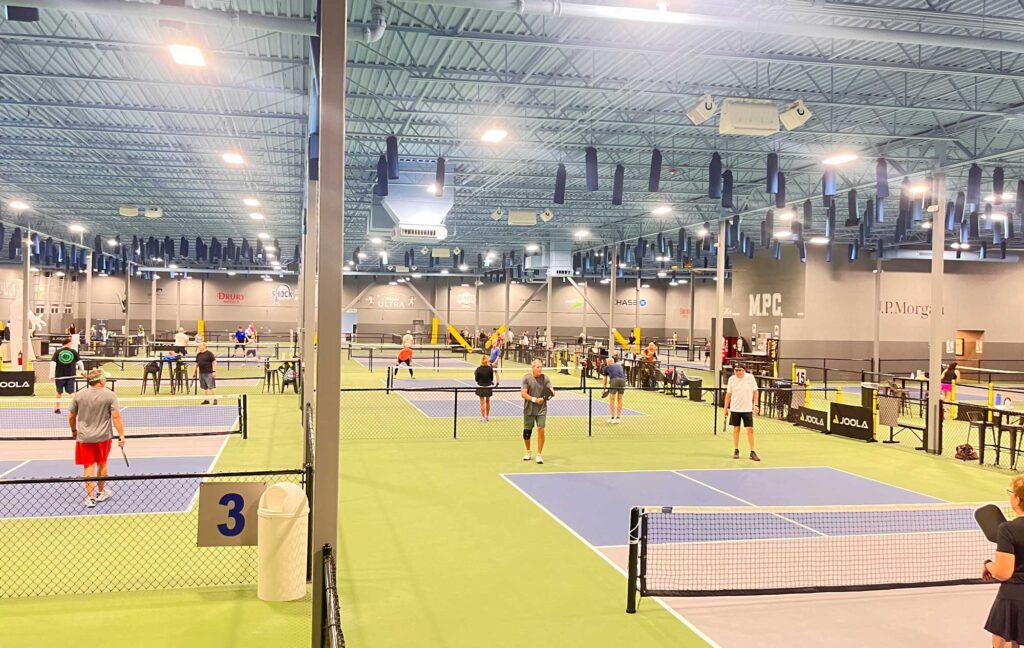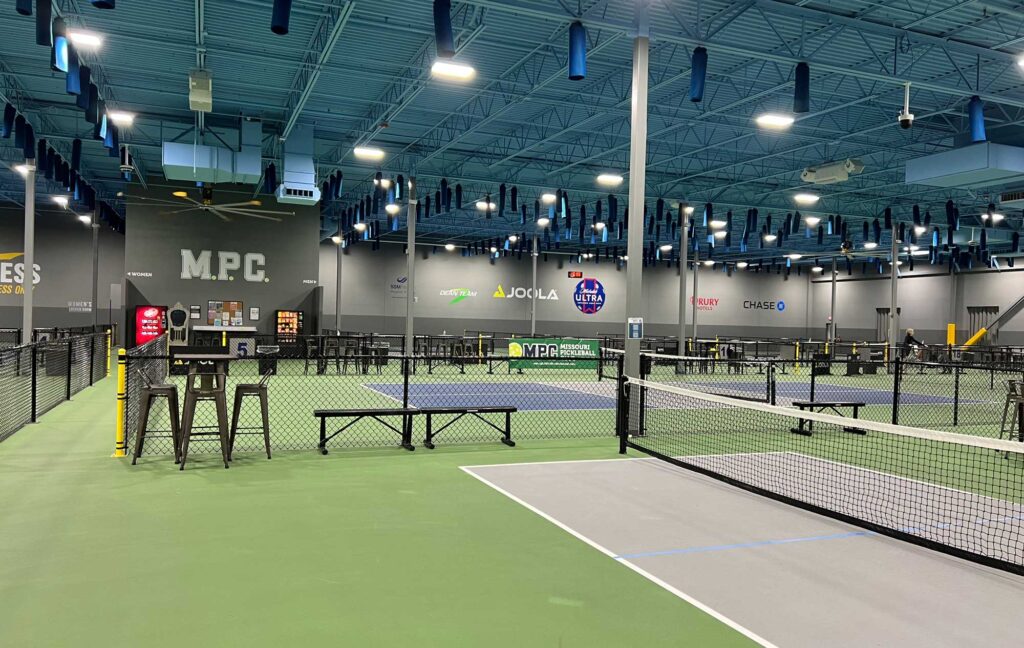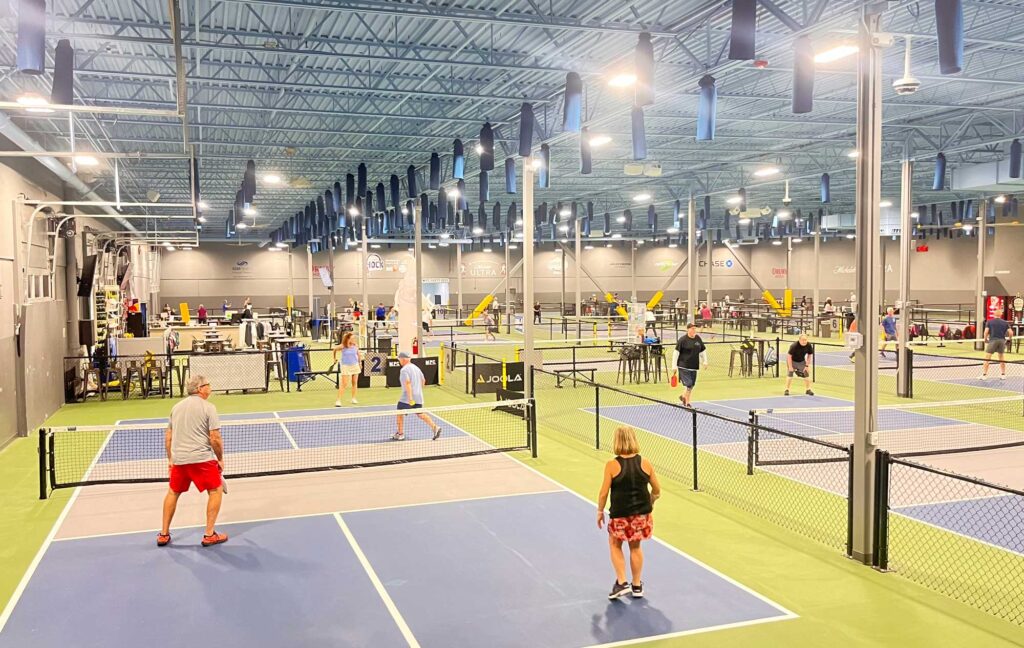In a pickleball industry increasingly dominated by “eatertainment” venues mixing the sport with food, drinks and premium pricing, Missouri Pickleball Club owner Michael Grewe has taken a radically different approach: keeping it simple and staying true to the game.
Grewe’s bold refusal to over-commercialize his club — limiting alcohol sales, avoiding food service and rejecting tiered memberships — has made his business a standout in a market chasing every potential revenue stream. For Grewe, it’s all about creating the best possible playing experience, not just capitalizing on pickleball’s explosive popularity.
This philosophy has turned Missouri Pickleball Club into a thriving community hub, proving the sport-first model can lead to both success and sustainability. Here’s how Grewe built one of the largest pickleball clubs in North America by staying true to the essence of the game.
Missouri Pickleball Club’s Origins
Missouri Pickleball Club’s story begins with an unexpected opportunity. During the COVID-19 pandemic, Michael Grewe, a commercial real estate professional, found the family business facing three large vacancies in one of their shopping centers. What started as a problem turned into a passion project that would eventually become one of the largest pickleball clubs in North America.
“We had just started playing pickleball three months earlier,” Grewe recalled
It all began with Grewe and his brother painting makeshift courts on a concrete slab. Within weeks, their small group had grown to 24 players, and it became clear the demand for year-round pickleball was only increasing. Seizing the opportunity, Grewe convinced his family to let him convert one of the vacant spaces into an indoor pickleball facility.
Initially, Grewe’s vision was modest — just four courts. However, after consulting with Jim Berger, an ambassador of USA Pickleball, he realized the potential was much larger. When Grewe asked how many courts the community could support, Berger responded, “As many courts as you can put in.”
With that encouragement, Grewe expanded his plans, eventually building 18 indoor courts. This bold move established Missouri Pickleball Club as the largest indoor pickleball facility in North America at the time.
Prioritizing the Player Experience
From the beginning, Grewe’s philosophy was simple: prioritize the playing experience over everything else. He made intentional decisions to build larger-than-standard courts, which he believes enhances the game and reduces the risk of injury.
“I refuse to build courts that small,” he explains, referencing the common 30-by-60-foot pickleball court. “We build 70-by-40-foot courts, so you have 10 feet on each side. It’s a huge difference being able to run around, being able to run outside [the lines].”
Missouri Pickleball Club’s focus on quality extends beyond just the court size. It’s about creating a space where players can truly enjoy the sport without distractions. Grewe is adamant his club is not in the business of “eatertainment.” While many venues mix food, drinks and pickleball, he sticks to a no-frills approach.
“We don’t try to be a lot of things that other people are trying to do,” said Grewe. “So many people try to capitalize on every single aspect of the money grab, and they’re just no longer true to pickleball.”
Keeping It Simple — and Affordable
At the heart of Missouri Pickleball Club’s success is its simple and affordable membership model. For just $25 a month, members have access to world-class facilities. Grewe deliberately avoids tiered membership systems that charge more for premium services or time slots. “Everybody is the same at my pickleball club, and I don’t care if you have more money or not,” said Grewe.
Despite offers from people willing to pay for reserved court times or premium access, Grewe sticks to his principles. “We get people trying to bribe us all the time … I want this court every Tuesday from 6 pm to 8 pm, and I’ll pay you for the next seven years,” he shared. “I’m like, ‘No, I’m not doing that.’ Everyone has the same access to the club, the same access to the courts — period.”
Indoor-Only Strategy for Consistent Play
One of the standout features of Missouri Pickleball Club is its indoor-only model. Grewe is a strong advocate for indoor pickleball because it eliminates the variables that can ruin outdoor play, like weather.
“There’s too many variables with outdoor — you have wind, you have sun,” said Grewe. With indoor courts, players can rely on consistent conditions, which is especially important for the tournaments the club hosts.
These tournaments are a big part of the club’s business. Missouri Pickleball Club hosts six marquee events each year, drawing players from across the country.
Beyond the serious business of running a pickleball club, Grewe ensures Missouri Pickleball Club is a place for fun and community. From glow-in-the-dark pickleball to age-based tournaments, the club organizes events that cater to a wide range of players. Grewe even installed a “timeout chair” in the middle of the club for players who get too competitive.
“If you’re playing pickleball and you’re being kind of a turkey, and you just smash the ball at Wanda, and you’re 65 years old, maybe you need to sit in the timeout chair and reevaluate why we’re here,” said Grewe, reinforcing that the club is about having fun — not competition at all costs.
Looking Ahead
As Missouri Pickleball Club continues to grow, with a third location set to open soon, Grewe remains committed to the values that made the club successful in the first place. While others in the industry may chase after more revenue streams, Grewe stays true to his core belief: pickleball first, everything else second.
“We do everything we can to stay true to pickleball, and that’s what’s kind of made it awesome for us,” said Grewe.
With his unique approach to running a pickleball club, Grewe has built not just a business, but a community that’s loyal to the sport — and to Missouri Pickleball Club.
Want to stay on top of pickleball industry trends? Subscribe to our newsletter for exclusive insights and behind-the-scenes content.



With over a decade spent covering the business side of sports and fitness, Rachel Chonko brings a wealth of experience and a true passion for active communities to Peake Media. As Editor-in-Chief, she’s focused on helping pickleball clubs and fitness facilities thrive, from guiding growth strategies to showcasing the latest industry trends. Rachel also hosts the Club Solutions Magazine Podcast, where she interviews leaders in fitness and pickleball to share insights and success stories with the wider community to give her listeners a competitive edge.
After taking up pickleball herself, Rachel has come to appreciate the sport’s unique blend of social connection and active living — a mix that’s perfectly in line with her editorial philosophy. Connect with her on LinkedIn, or check out her articles below for a deep dive into the energy and culture driving pickleball’s rapid rise.







